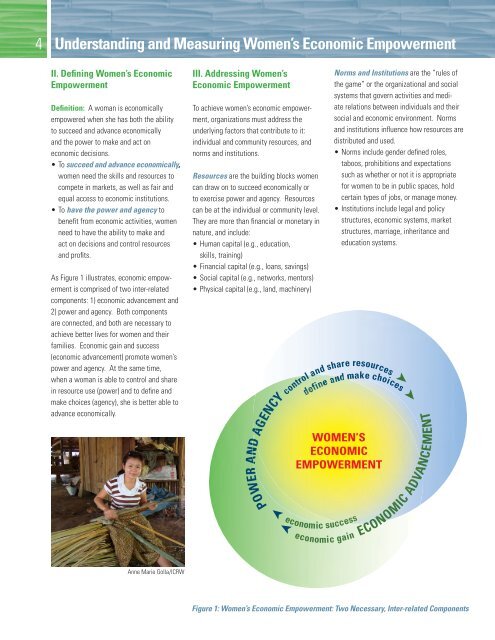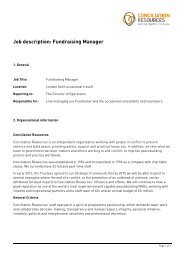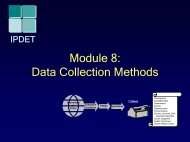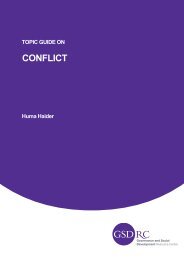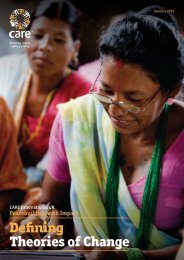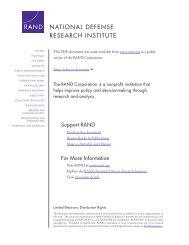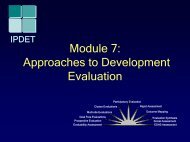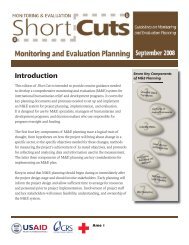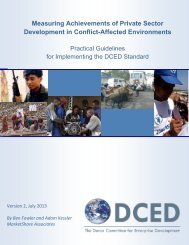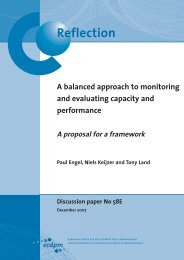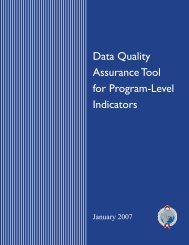Understanding and measuring womens economic ... - ICRW
Understanding and measuring womens economic ... - ICRW
Understanding and measuring womens economic ... - ICRW
You also want an ePaper? Increase the reach of your titles
YUMPU automatically turns print PDFs into web optimized ePapers that Google loves.
4 <strong>Underst<strong>and</strong>ing</strong> <strong>and</strong> Measuring Women’s Economic EmpowermentII. Defining Women’s EconomicEmpowermentDefinition: A woman is <strong>economic</strong>allyempowered when she has both the abilityto succeed <strong>and</strong> advance <strong>economic</strong>ally<strong>and</strong> the power to make <strong>and</strong> act on<strong>economic</strong> decisions.• To succeed <strong>and</strong> advance <strong>economic</strong>ally,women need the skills <strong>and</strong> resources tocompete in markets, as well as fair <strong>and</strong>equal access to <strong>economic</strong> institutions.• To have the power <strong>and</strong> agency tobenefit from <strong>economic</strong> activities, womenneed to have the ability to make <strong>and</strong>act on decisions <strong>and</strong> control resources<strong>and</strong> profits.As Figure 1 illustrates, <strong>economic</strong> empowermentis comprised of two inter-relatedcomponents: 1) <strong>economic</strong> advancement <strong>and</strong>2) power <strong>and</strong> agency. Both componentsare connected, <strong>and</strong> both are necessary toachieve better lives for women <strong>and</strong> theirfamilies. Economic gain <strong>and</strong> success(<strong>economic</strong> advancement) promote women’spower <strong>and</strong> agency. At the same time,when a woman is able to control <strong>and</strong> sharein resource use (power) <strong>and</strong> to define <strong>and</strong>make choices (agency), she is better able toadvance <strong>economic</strong>ally.III. Addressing Women’sEconomic EmpowermentTo achieve women’s <strong>economic</strong> empowerment,organizations must address theunderlying factors that contribute to it:individual <strong>and</strong> community resources, <strong>and</strong>norms <strong>and</strong> institutions.Resources are the building blocks womencan draw on to succeed <strong>economic</strong>ally orto exercise power <strong>and</strong> agency. Resourcescan be at the individual or community level.They are more than financial or monetary innature, <strong>and</strong> include:• Human capital (e.g., education,skills, training)• Financial capital (e.g., loans, savings)• Social capital (e.g., networks, mentors)• Physical capital (e.g., l<strong>and</strong>, machinery)POWER AND AGENCY➤➤definecontrol <strong>and</strong> share<strong>economic</strong>Norms <strong>and</strong> Institutions are the “rules ofthe game” or the organizational <strong>and</strong> socialsystems that govern activities <strong>and</strong> mediaterelations between individuals <strong>and</strong> theirsocial <strong>and</strong> <strong>economic</strong> environment. Norms<strong>and</strong> institutions influence how resources aredistributed <strong>and</strong> used.• Norms include gender defined roles,taboos, prohibitions <strong>and</strong> expectationssuch as whether or not it is appropriatefor women to be in public spaces, holdcertain types of jobs, or manage money.• Institutions include legal <strong>and</strong> policystructures, <strong>economic</strong> systems, marketstructures, marriage, inheritance <strong>and</strong>education systems.gainresources ➤<strong>and</strong> make choices ➤ECONOMIC ADVANCEMENTWOMEN’SECONOMICEMPOWERMENT<strong>economic</strong> successAnne Marie Golla/<strong>ICRW</strong>Figure 1: Women’s Economic Empowerment: Two Necessary, Inter-related Components


